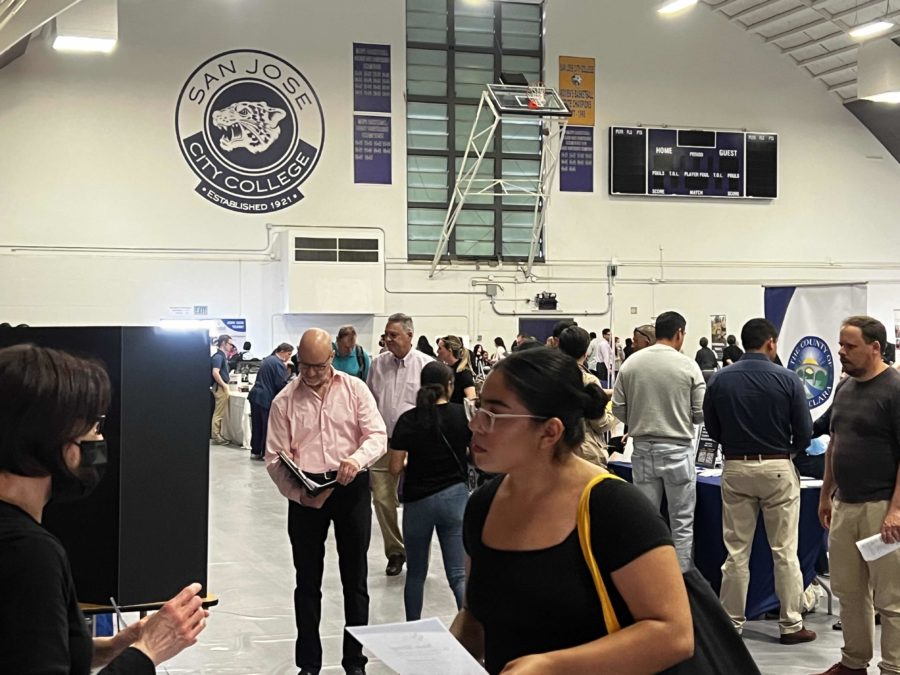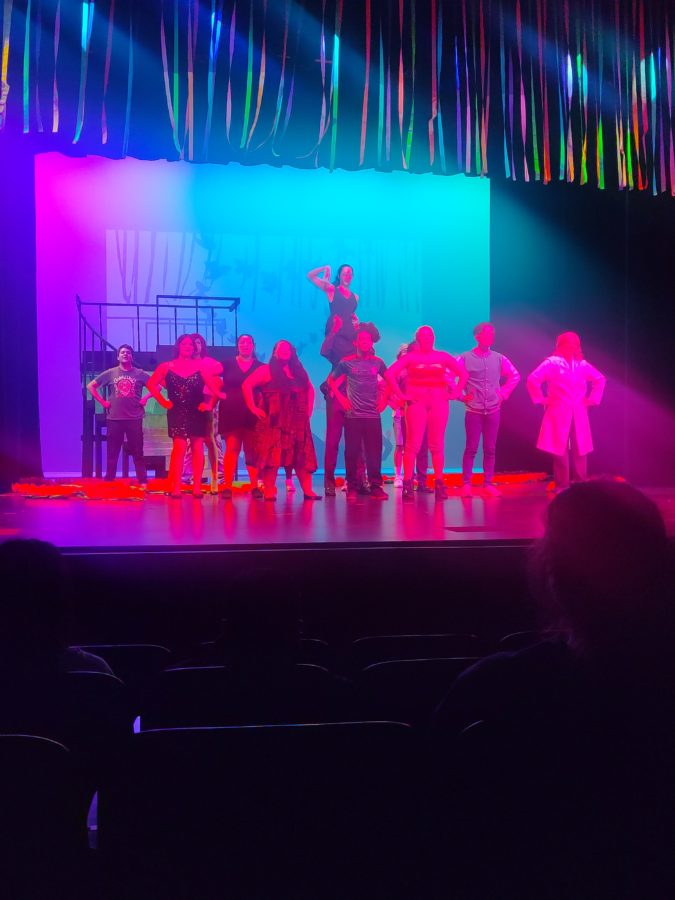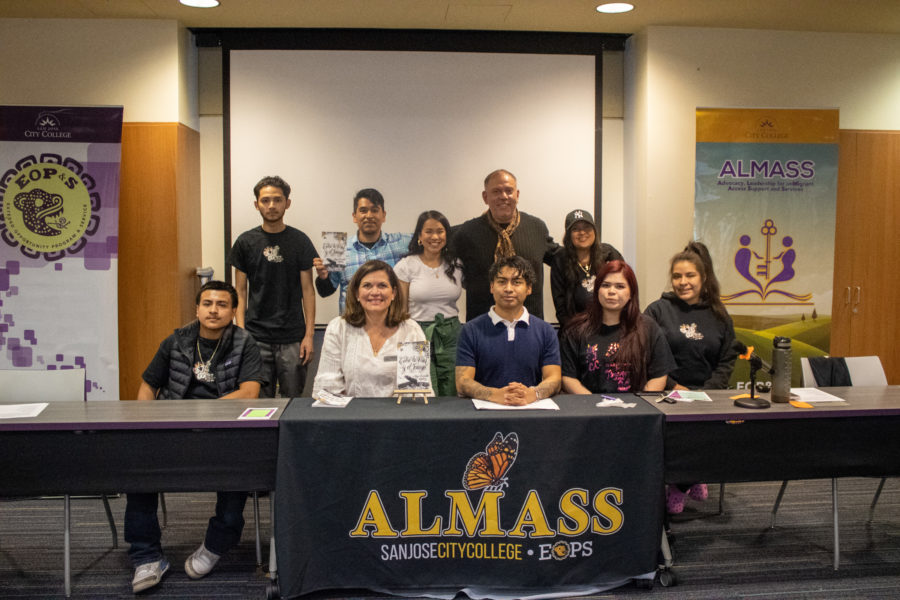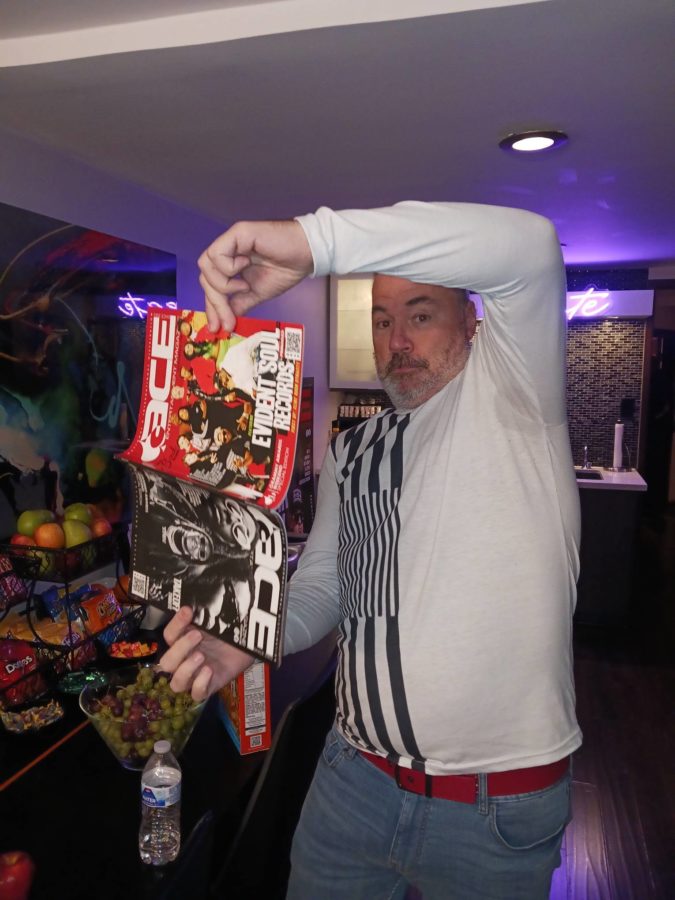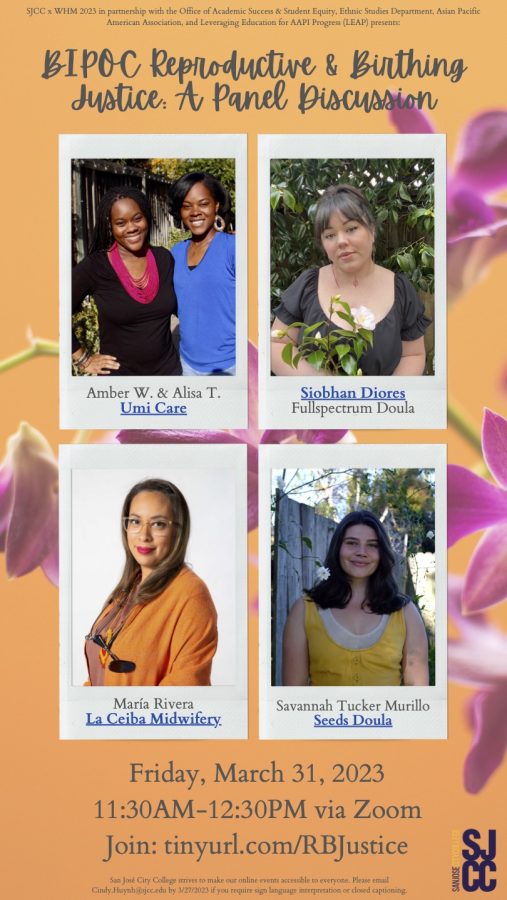Questions have surfaced regarding the potential misuse of school funds.
The funds were received from the Measure 2010 G bond which was approved and paid by the voters. A controversy over the use of the bond money has arisen. It specifically revolves around the delay of building a Vocational Technology Building and the plan to build a Media Arts Center.
“The bond measure ballot language specifically says that money is to be used to build a new Vocational Technology Building,” English Instructor Charles Heimler said, “and to upgrade the infrastructure of the college and to build buildings and facilities for programs that focus on getting students jobs … And that’s not what is happening.”
The original ballot language is based on what is outlined in the Master Plan, which is a document that establishes the framework of the school’s future educational needs.
“When you hear the information that says ‘well, the bond language didn’t have that in,’ well, no, it didn’t. What it did have is a broad category,” Chancellor Rita Cepeda said. “The notion is that you write broad (ballot) language in terms of the general areas, such as student research buildings. And then it’s up to the college and the Board of Trustees to put the specific list of projects.”
But there are others who share the same concerns as Heimler.
Mihai Bulea, a San Jose resident and taxpayer, is a solar and transportation enthusiast who said he was excited when he read the Measure 2010-G Bond ballot and learned that there would be a Vocational Technology building that would have classes in “solar and clean technology fields.” But he said he was disappointed when he learned that the Vocational Technology Building was getting less and less money. He said that there was no arts or theater mentioned in the original ballot language.
“The taxpayers voted for this because they understand the necessity for these types of skills … right now we need plumbers, electricians and AC guys,” Bulea said. “We need to get into the solar industry because we need to become more energy efficient. There is a shortage of people in these trades.”
The ballot language says, “Bond proceeds shall only be expended for the specific purposes identified herein.”
Approximately $31 million from the Measure G-2010 Bond money the school received is being spent differently from the original plan.
Cepeda said there is always more need than there are dollars, so it becomes a tough decision.
“The bond language does not have any buildings specifically listed in the language,” Vice President of Administrative Services Greg Nelson said. “It gives you parameters but it does not give you specific building.”
However, the ballot language uses the words “Vocational Technology Building.” Some of the parameters it mentions are “providing sufficient classrooms and science labs to offer more medical job training and workforce development courses” as well as “offerings in key disciplines such as nursing, health science, solar and clean technology fields, and information and computer technology, in developing the scope of projects to be funded.”

Click on the photo to see the original document.
Cepeda said that the Media Arts Center does fit the ballot language. She said the “information and computer technology” are the categories that the Media Arts Center falls into.
Oscar Quiroz-Medrano, 20, ethnic studies major, said he believes the school is misusing the money they were given by taxpayers by building a Media Arts Center instead of spending the money on the Vocational Technology Building.
Nelson said the reason for the change is because the school did not have enough money to build a Vocational Technology Building, which will house the classes currently held in the 100 and 200 Wing buildings.
The classes that are currently in the 100 and 200 Wing buildings, such as Air Conditioning, Facilities Maintenance Technology, Machine Technology, Laser Technology and Solar Technology, do follow the criteria of the bond that says it will provide “workforce development courses.”
“They (Vocational Technology faculty) need approximately $40 million to build a building in kind to the existing space they currently have, but we only have a $79 million bond; $16 million of that is for maintenance, so you start losing money real fast. We are spending $800,000 on security upgrades,” Nelson said. “Now for the next bond, we won’t have all of those issues, to a certain degree, but then you can dedicate more dollars to build a properly-sized building for VoTech.”
In the March 19 report Nelson presented to the Citizen Bond Oversight Committee, $31 million was allocated for two buildings and other campus site improvement plans (such as demolitions and renovations). According to this report, approximately $22 million would be spent for the Media Arts Center, approximately $2.5 million for the campus site improvements and the rest was to go to the Vocational Technology Building.
Another question many have on their mind is why the Vocational Technology Building and Media Arts Center get put in the same budget when they are two separate buildings.
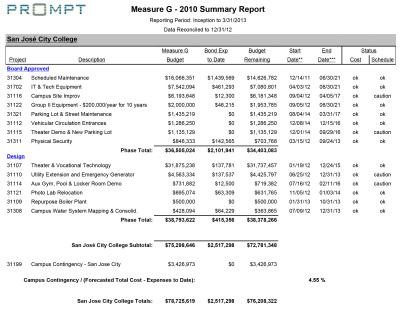
Click on the photo to see the original document.
Nelson said the money for Vocational Technology Building and the Media Arts Center were combined into one project because of the location of the site.
“The sight is very compact, so when we did the bond revision we put both lines together so we could bid it out to one architect and one contractor, instead of having two architects and two contractors fighting over the same space and us having issues logistically,” he said.
Nelson said that in the preliminary scope, the previous bond measure said the school had the Vocational Technology Building and the Theatre as the priorities.
However, they had to be downsized because the district did not receive enough money to meet the needs of the campuses, they left the Theatre in and they zeroed out Vocational Technology Building.
“So when I arrived on campus (in 2011), knowing that VoTech needed some type of new facility, we moved the dollars that were allocated for the General Education complex to the VoTech,” Nelson said. “Subsequently, later on when we started looking at what you could actually build with those dollars, we would (end) up with a space that is approximately 10,000 square feet. Currently they occupy about 40,000 square feet, so there was no way they were going to be able to move into that small building.”
Stephen Mansfield, Air Conditioning instructor, said 10,000 square feet would not be enough room for what they need.
It is not certain when a new ballot will be made for a new bond.
Mansfield said he is absolutely pessimistic that the Vocational Technology building will get a 45,000 square-foot building with the next ballot because the district is not even sure how much money they will get with that bond yet.
Another reason that the district wants to build a new Media Arts Center, which includes a new Theatre is because the current Theatre is not up to code.
The Theatre is not currently code compliant, electrically or fire code compliant, there are no restrooms in the front of the building and it has a lot American Disabilities Acts issues, Nelson said.
“We also have circulation issues on this campus, trying to get around the campus without going to the surface streets, so the idea was to put a loop road on the campus but the Theatre was in the way, and then we realized we could spend $20 million to renovate the Theatre or just shy of $18 million on a brand new building (Theatre),” Nelson said.
Nelson said the reason it would be more money to renovate the building rather than to build a new one is because they would have to seismically upgrade the building if they renovated it.
Some faculty said the other issue they had with the construction of the new Media Arts Center is that there was no program review for it.
“The problem is ‘they’ve put the Cart before the Horse’ because you have to have a program review first in which you identify the needs you have for the building and the job market. So you have a program review first and then you build the building based on what you discover in the program review and this process has not been done (with the Media Arts Center),” Heimler said.
Nelson said program review does not drive all the decisions but instead it informs the decisions. He also said some program reviews are also done only every four years, and the Fine Arts and Multidisciplinary building, for example, did not even have program reviews.
“We don’t have a process for conducting program review for entire buildings. As indicated in the name, program review is for programs, not buildings. Once a facility is identified, we use program review to help identify needs for individual courses/programs within the building,” President of SJCC Barbara Kavalier said.
Nelson said he wanted to point out that the school does not do these types of things “half-hazard.”
“ Most of the stuff we do goes through a legal counsel specifically for the bond. … they review everything to make sure we that we don’t have any issues going forward” Nelson said. “They make sure we are staying compliant with state law. … and so far we haven’t had any issues. We’ve received clean audits for the bond for the last 2 years. We get a performance audit and a financial audit. … And our audits are not done by us, it’s done by third a third party.”
The Measure G-2010 Bond passed with 58 percent of voters to grant the San Jose/Evergreen Community College District $268 million, on Nov. 2, 2010.
On May 14 the appointment of an Ad Hoc Audit Committee on Facilities/Measure G was approved at the Board of Trustees meeting. The committee will review the details of the Master plan and the Measure G-2010 Bond. The members on the committee are Heimler, Theatre Arts Instructor Donna Mendoza, Administration of Justice Instructor Phil Crawford and Laser Technology Instructor Sydney Sukuta.
CORRECTION (May, 23): The Ad Hoc Audit Committee was approved by the Academic Senate and announced at the Board of Trustees meeting on May 14.

